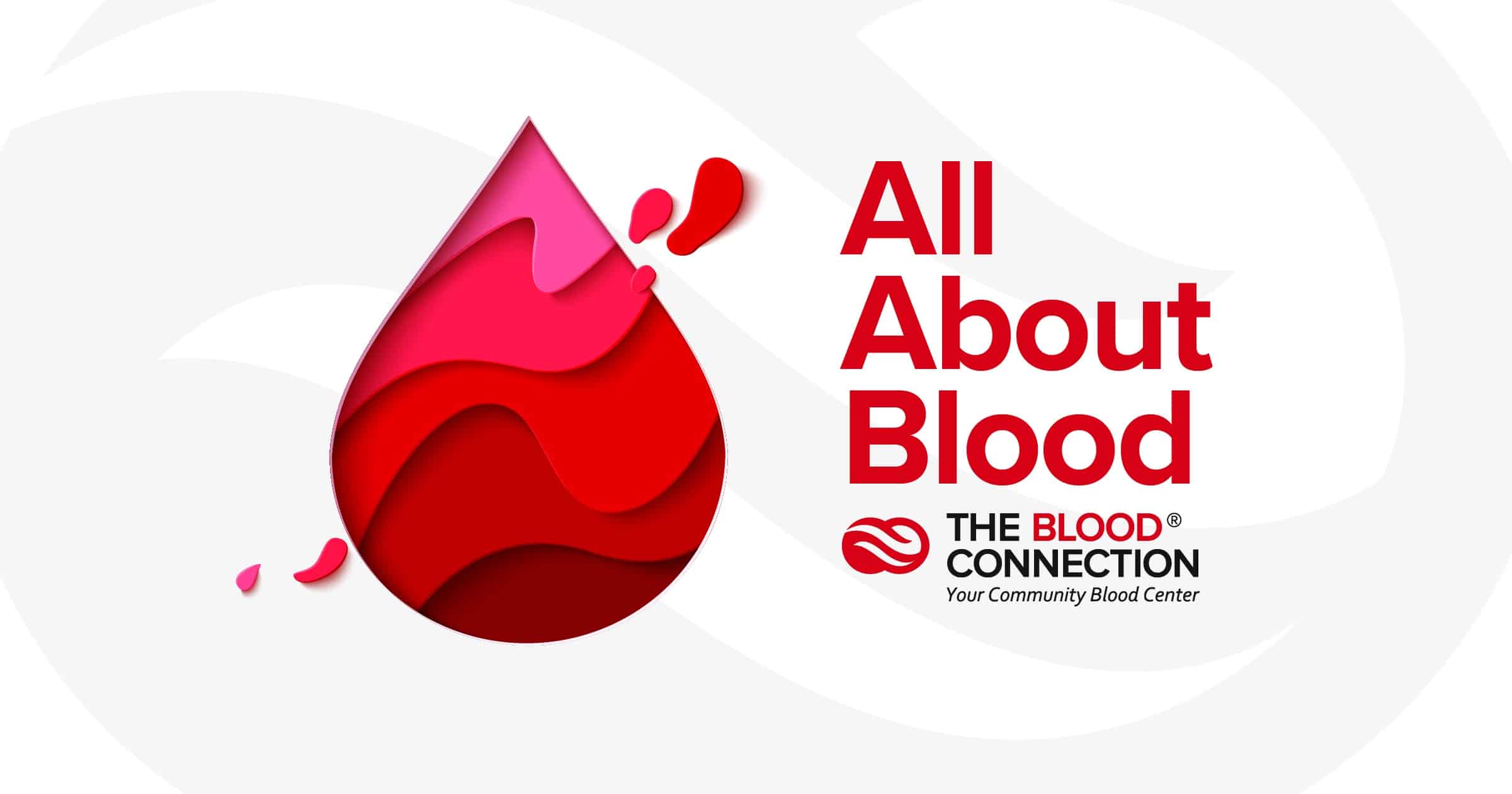All About Blood
What’s one thing you have in common with everyone you meet? Blood. whether you’re O+ or AB-, everybody has blood, and it plays a critical role in keeping you alive. In fact, blood probably does more for your body than you realize. You know that you need blood, but what does it do inside your body? How is it helping you? And after donating blood, how does your body replenish what you gave? Let’s dive into it!
What is Blood?
You likely already have a pretty good idea of what blood is, but let’s bolster your understanding with a scientific definition. Blood is a bodily fluid in the circulatory system that travels via blood vessels to transport vital substances through the body and take waste products away from organs and tissues. Blood consists of four distinct parts:
- Plasma – the liquid part of the blood
- Red blood cells – the cells that carry oxygen from the lungs to the rest of the body
- White blood cells – the cells responsible for fighting infections in the body
- Platelets – blood cells that clot and control bleeding
Without blood, your body wouldn’t be able to get the nutrients and oxygen it needs, nor could it fight off infection and keep you healthy. To fully understand the critical importance of your blood, let’s take a closer look at what it does.
What Does Blood Do?
As mentioned, blood travels through the body to deliver nutrients and remove waste. Your blood vessels function like a complex highway network that weaves through different parts of your body. Blood is the carrier that travels this highway. Deliveries on this blood highway include vital elements such as oxygen, vitamins, hormones, antibodies, heat, and electrolytes.
Not only is blood an effective delivery service for your body, but it is also a reliable waste manager. As it travels through the body, the blood picks up carbon dioxide and other waste products that your body doesn’t need and takes them to the kidneys, lungs, and digestive system to be removed.
In addition to these remarkable, life-sustaining functions, blood fights infections and heals bodily injuries. Blood contains white blood cells, which fight off harmful, foreign invaders such as bacteria and viruses. Also, if you’ve ever gotten a scab from a cut or scrape on your body, that scab is another example of your blood taking care of you. After an injury, blood rushes platelets to the injury site, where they cause the blood to clot and harden, sealing the wound and ensuring you don’t lose any more blood. This scab also keeps dirt, bacteria, and other harmful contaminants from entering the bloodstream.
How Blood Travels Through the Body
Blood travels through the body via blood vessels that comprise the circulatory system, and your heart is responsible for pumping blood through those vessels. Blood leaves the heart through blood vessels called arteries, starting with the aorta. As blood travels through the body, carrying its delivery of essential nutrients and oxygen, it then passes through capillaries, which are thin vessels that connect the arteries and veins. The thin walls of capillaries allow oxygen, nutrients, carbon dioxide, and waste to pass to and from tissues in the body.
From here, veins take deoxygenated blood back to the heart. As veins get closer to the heart, they get bigger in diameter, eventually merging into two primary veins known as the vena cava. The superior vena cava is responsible for bringing blood from the head and arms, and the inferior vena cava carries blood from the abdomen and legs. The system of blood vessels in an adult human body is over 60,000 miles long, enough to wrap around the earth twice!
How the Body Cleans Blood
To rid itself of the waste it gathers throughout the body, blood must be cleaned. The three major organs that contribute to the cleansing process are the liver, lungs, and kidneys. The liver filters toxins and unwanted byproducts and extracts nutrients to be passed on to the rest of the body. Lungs remove unwanted gasses (carbon dioxide) and release them through breath. Finally, kidneys filter waste and byproducts that are then removed through the urinary system.
Replenishing Blood After Donating
The average human adult has approximately 10 pints of blood in their body, and a typical donation of blood equals one pint. After losing this blood, your body works to replenish that pint. First, your body will notice that it has lost some red blood cells, and your kidneys will sound the alarm. The peritubular cells in the kidneys will sense the lower level of oxygen (due to the lack of red blood cells) and secrete a protein called erythropoietin. This protein is released into the bloodstream and then travels to the bone marrow.
Bone marrow is where the magic happens. This spongy substance found in the center of bones is where stem cells are produced. Stem cells are the foundation of all other cells in the body, as they form the foundation for whatever cells the body needs. In this instance, because of the erythropoietin produced by kidneys, your body knows that these stem cells need to be made into red blood cells. From here, the stem cells will divide and become immature red blood cells that continue to divide and mature until your red blood cell count rebuilds to its original level. Within 24 hours of donating, your blood volume will be replenished; however, red blood cells take 4-6 weeks to be replaced entirely.
Blood is vital to our bodies, so it’s crucial for blood banks to have enough of it on hand to help patients in need. That’s where you come in. Blood banks like The Blood Connection rely on volunteer donors to keep blood supplies stocked, because it can’t be made or manufactured anywhere else.
To learn more about donating and to find a donation center near you, visit https://thebloodconnection.org/.


